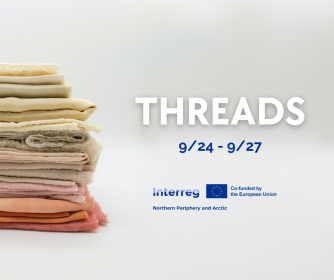THREAD project: Addressing Textile Waste in the NPA Region
The Western Development Commission (WDC) announces the successful funding of the THREAD project. Supported by the Interreg Northern Periphery and Arctic Programme, THREADs (Textile and Habiliment Reuse for the Environment and NPA Area Development) is set to launch a transformative three-year initiative starting in September 2024, focusing on innovative textile waste management.
THREADs aims to significantly reduce textile waste in the Northern Periphery and Arctic region. With a total budget of €1.5 million, the project will implement a range of innovative approaches across the textile lifecycle—from design to disposal. This initiative includes trialling smart waste collection methods, enhancing circular practices, and integrating social inclusion initiatives in circularity efforts. Additionally, the project will explore new business models to support sustainable practices.
The project unites a diverse group of partners from across Europe, reflecting a collaborative effort to tackle an urgent environmental issue. The lead partner, Kajaani University of Applied Sciences from Finland, is joined by other key stakeholders including the Municipality of Kittilä, Kiertokaari Ltd, Remiks Husholdning AS from Norway, Technological University of the Shannon – Forge Design Factory from Ireland, University of Boras and Lulea Miljoresurs AB from Sweden, and the Icelandic Textile Center.
The funding announcement marks a crucial step towards implementing effective solutions that address both the environmental impact of textile waste and the challenges posed by fast fashion in sparsely populated areas. By focusing on sustainability and efficient resource use, THREADs is poised to create meaningful change in the way textile management is approached in the NPA region.
THREAD project textile waste Western Development Commission WDC Interreg Northern Periphery and Arctic Programme
Western Development Commission (WDC)





